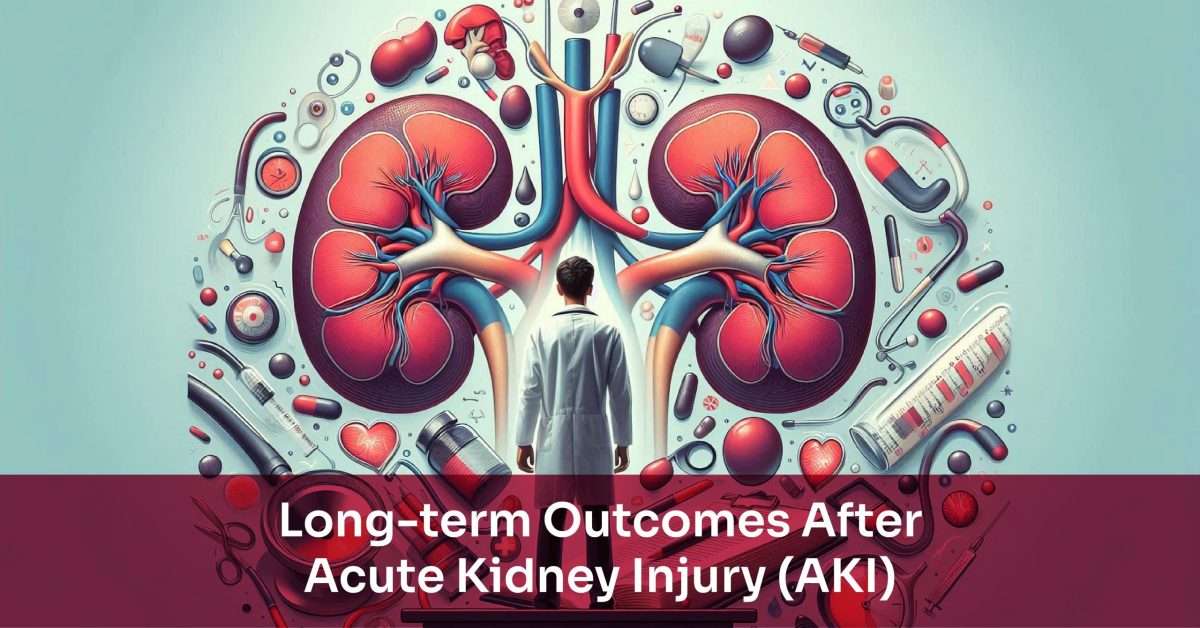Acute kidney injury is an abrupt reduction in kidney function over hours to days. Such a condition is not only the most common complication that occurs among hospitalized patients but also a strong predictor of adverse long-term outcomes. The short-term consequences of AKI are well recognized: fluid overload, electrolyte imbalances, and increased mortality. The long-term impact of surviving an episode of AKI is much less appreciated. Surviving an episode of AKI is not merely a matter of short-term recovery; more often than not, it lays the foundation for a cascade of chronic health problems that will impact a patient’s quality of life and survival for years to come. Understanding long-term outcomes is important not only for healthcare providers but also for patients to provide for proper care and monitoring once a patient leaves the provider.
Spectrum of Long-term Outcomes After AKI Chronic Kidney Disease and End-stage Renal Disease
The development of chronic kidney disease (CKD) and, in some cases, progression to end-stage renal disease (ESRD) represents some of the most severe long-term effects of AKI. Studies showed that those who survive AKI are at greater risk for development of CKD compared with patients without AKI. This risk remains even after adjustment for the pre-existing conditions and severity of the initial kidney injury. The pathophysiology includes persistent injury and loss of functional nephrons, leading to a stepwise deterioration in overall renal function. For some patients, this decline is gradual and stabilizes at a certain point. For others, it continues until they become severely ill and require renal replacement therapy, including dialysis or kidney transplantation.
Higher Mortality Chances
Surviving an episode of AKI does not mean the risks associated with the condition have disappeared. Several studies show that AKI survivors are at a strongly heightened risk for death both in the short term and long term after the onset of AKI. The reasons behind this heightened mortality risk are multifactorial, covering CKD up to the impairment of cardiovascular and other organs. Interesting enough, the severity of AKI and the degree of renal recovery dramatically relate to the risk of death. Patients, but especially those who did not recover completely from AKI or had persistent renal dysfunction develop subsequently, are very vulnerable to these poor outcomes.
Cardiovascular Complications
Cardiovascular disease contributes to most deaths in survivors of AKI. The association between AKI and cardiovascular complications is complex and also directional. For example, certain cardiovascular disorders predispose people to AKI. However, systemic inflammation and oxidative stress that occur with AKI result in endothelial dysfunction characterized by rapid acceleration of atherosclerosis, which contributes to the patient’s cardiovascular events. Patients with AKI suffer from fluid overload and hypertension, predisposing them to cardiac stress and the development of heart failure, among other cardiovascular diseases. Therefore, follow-up care of a survivor of AKI should incorporate careful vigilance to monitoring and managing the patient’s cardiovascular system.
